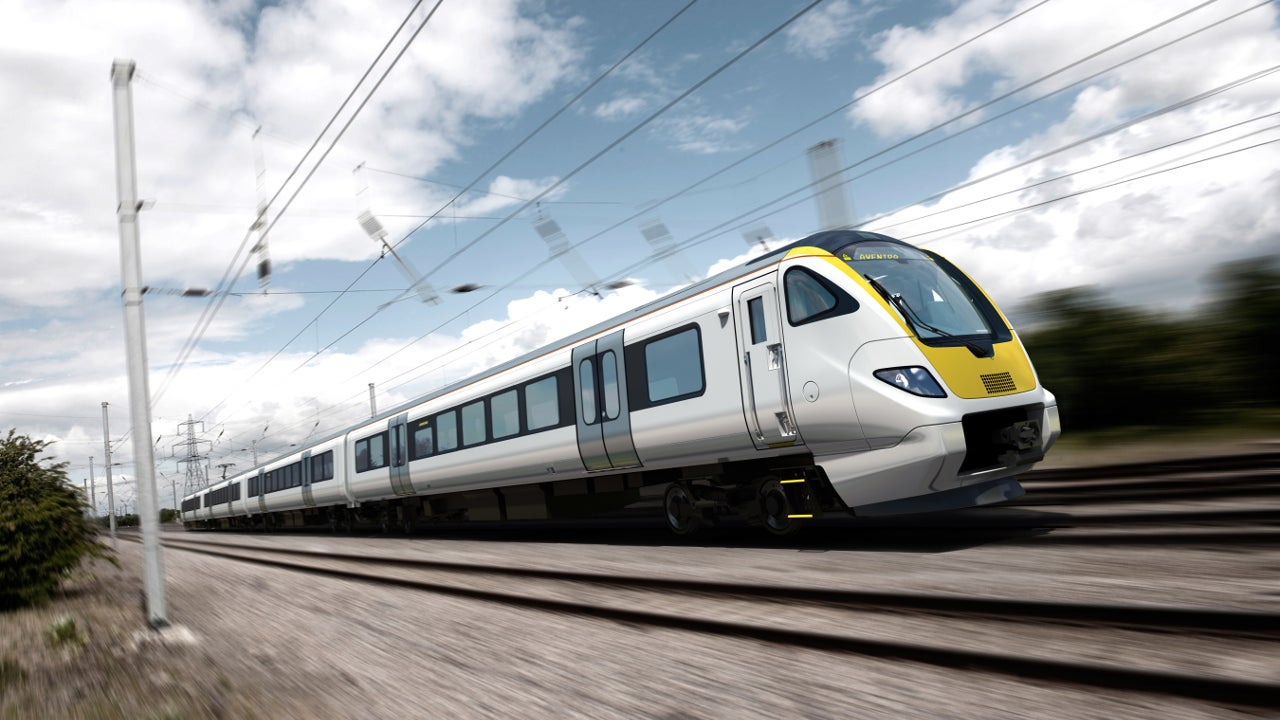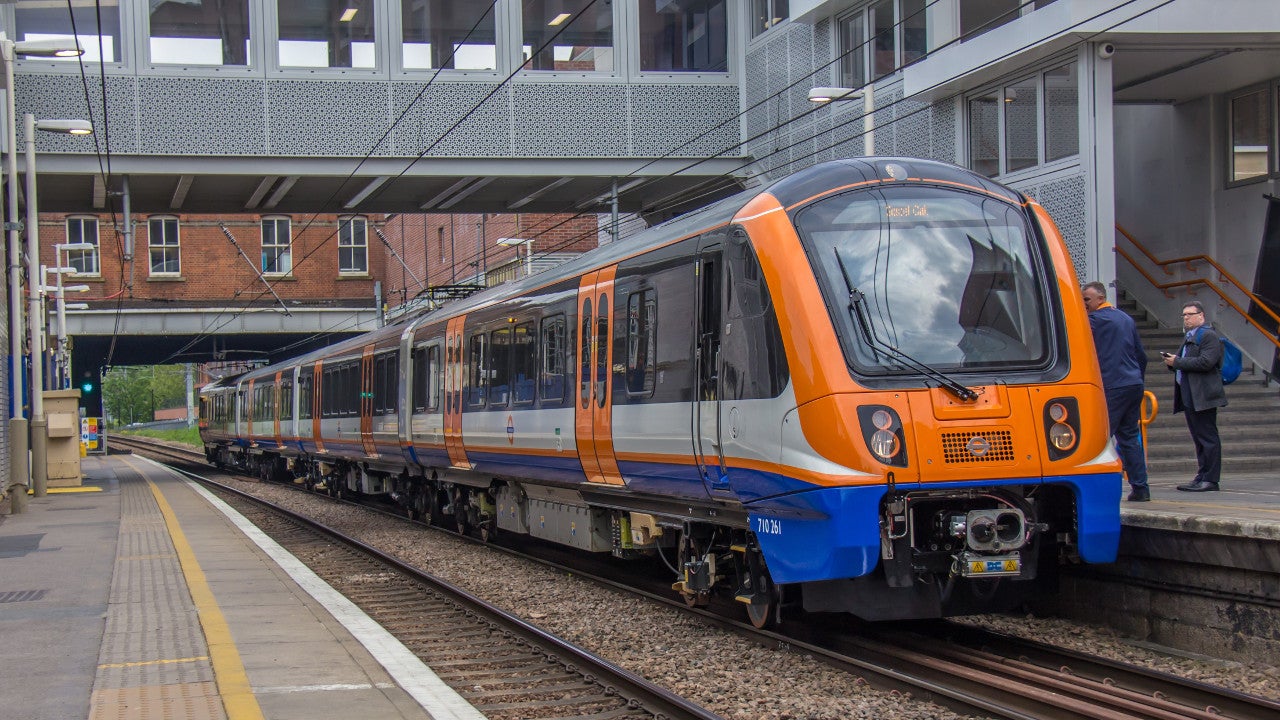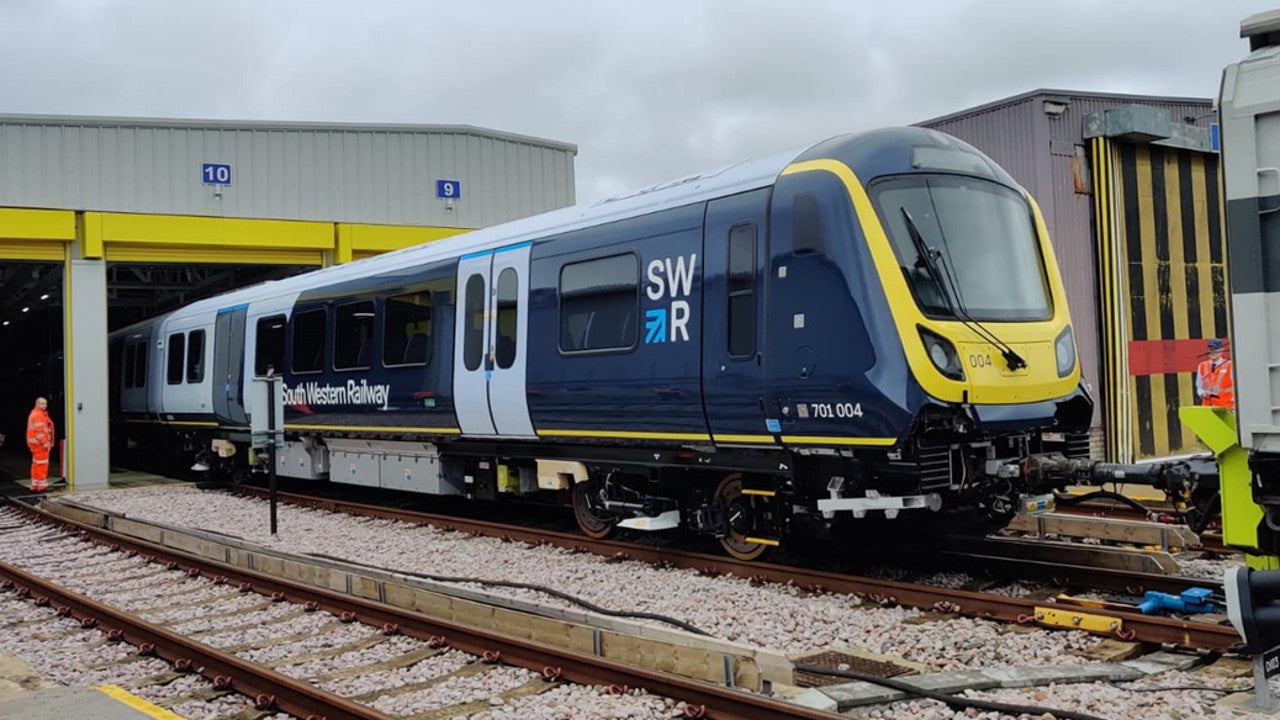Bombardier’s Aventra is a modular, easily customisable single-deck train capable of operating in both diesel and electric modes. It is among the fastest, smartest and most economical platforms in modern rail.
The vehicle can be equipped with MITRAC traction batteries to operate as a battery electric multiple unit (BEMU).
The Aventra trains are part of the UK mainline train operations, ranging from high-capacity metro systems to intercity services. Designed and built in the UK, the vehicle serves the Elizabeth line, East Anglia, London Overground, South Western, West Midlands and Essex Thameside rail franchises.
The trains are maintained by Bombardier’s services teams from 21 sites in the UK.
Bombardier Aventra orders and deliveries
Bombardier received a $2.1bn contract from Transport for London to provide 65 nine-car Aventra trains and build a new purpose-built maintenance depot at Old Oak Common in February 2014. It was awarded contracts worth £358m ($558m) for the delivery and maintenance of 180 new Aventra vehicles for Transport for London in 2015. The company reached an agreement in December 2019 to extend the existing maintenance and support services contract from July 2025 to July 2035.
A $1.1bn contract to supply 665 Aventra vehicles to Angel Trains for operation on Abellio’s East Anglia franchise in the UK was signed in September 2016.
In December 2017, a contract was signed with rolling stock leasing company Porterbrook and train operating company c2c to supply 60 new Aventra vehicles for services on the c2c rail franchise. Bombardier received a new order from Transport for London in March 2018 to supply five additional Aventra trains for operation on Elizabeth line, bringing the total number of trains to 70.
Bombardier delivered the first ten-car Aventra Class 710 train as part of a fleet of 90 trains for the South Western Railway in June 2020.
Bombardier Aventra features
Aventra is designed to enable predictive and planned maintenance that can be scheduled during fleet downtime.
It features the MITRAC Energy Saver solution, ORBITA solution and Automatic Vehicle Inspection System (AVIS), which have provided a 50% improvement in maintenance exam periodicities since 2012, a 40% decrease in man-hours per exam, and a 40% reduction in the maintenance contribution to overall lifetime cost.
The on-board and train-to-wayside systems in the train ensure safety and efficiency for passengers and operators. The trains can automatically manage braking and door activation on arrival at a station, reducing dwell time at stations.
The modular nature, from the carriage length to interior layout and design, makes it easily customisable to meet customer needs while maintaining a lightweight carbody and low operational costs.
The train can run at a maximum speed of 200km/h and can be powered by an electric supply, or by the on-board diesel engine.
The design provides the flexibility of modifying the carriage length and the number of doors. It also ensures lesser time for assembly and reduced shipping costs with high crash repairability. The cab component can also be designed according to the different needs of customers such as balanced performance and aesthetics, operational flexibility, or maximum speed.
Interior design
The customisable interiors are spacious and easy to clean with maximum accessibility, while cantilever seats provide better cleanability and visibility under seats.
The latest IP-based plug-and-play systems enable the train owners and operators to undertake vehicle modifications, including mid-life upgrades and weekly interior re-configurations.
The passengers can see travel information on full-colour displays inside the trains. Operators can also prefer to include 4G Wi-Fi, at-seat power, smartphone integration, and live passenger counting options.
The train can be equipped with additional features such as infotainment systems and Bombardier’s GoJoe tool, which provide real-time information to passengers throughout their journey.
Bombardier Aventra sustainability features
The trains come with traction energy savings options, along with optimised availability, reliability, cost and performance through a design-for-maintenance system.
The vehicle is equipped with subsystems such as the FLEXX Eco bogie, ThermoEfficient Climatization system and smart stabling to ensure low energy consumption.
The smart stabling remote wake-up feature allows the train to re-energise automatically during the night. It ensures energy conservation as the trains can start quickly for the first ride of the day.
The battery-operated model is an alternative to diesel multiple units (DMUs) for non-electrified and partially electrified networks, helping transit authorities in meeting environmental commitments and reducing emissions.





